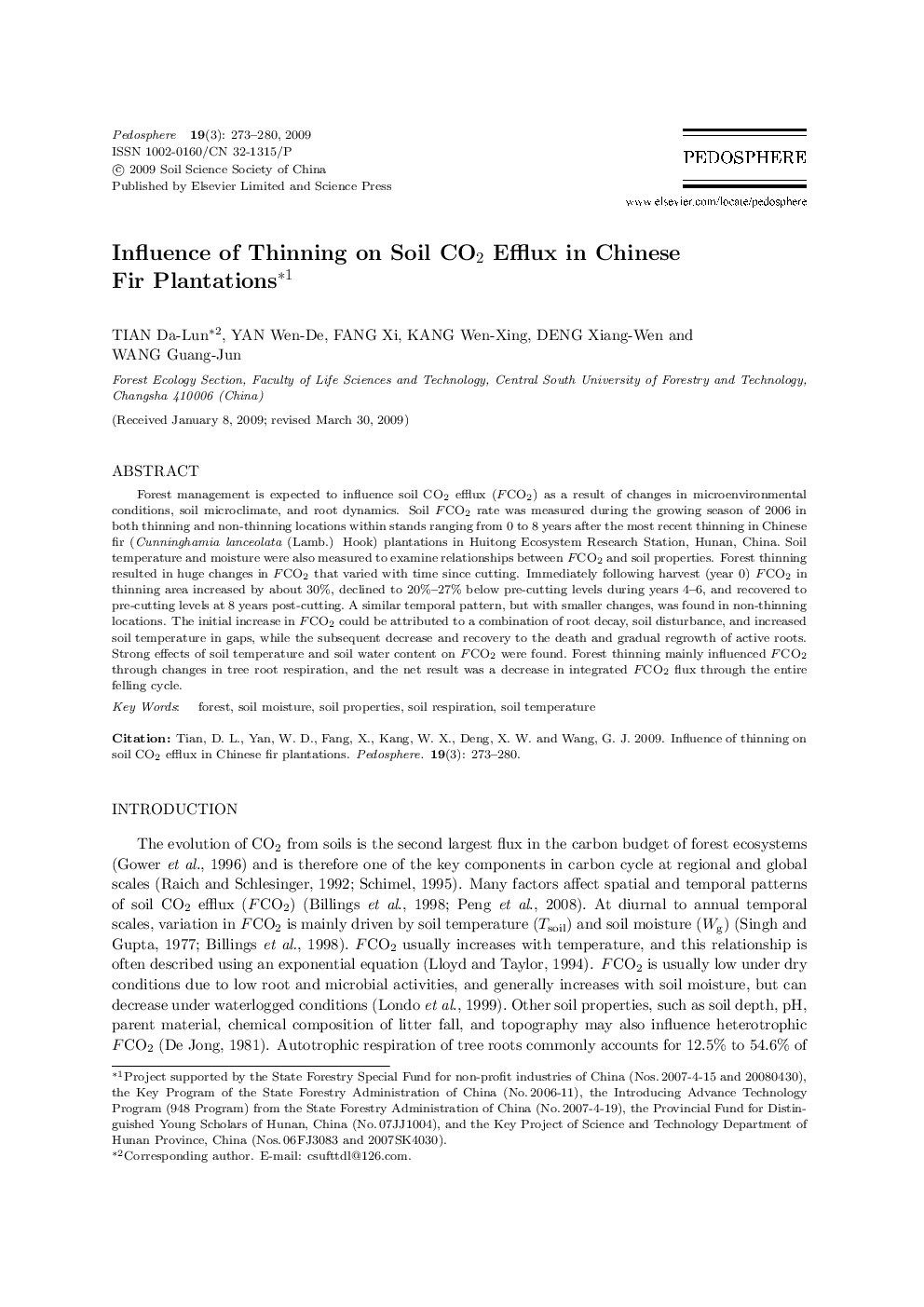| Article ID | Journal | Published Year | Pages | File Type |
|---|---|---|---|---|
| 4581975 | Pedosphere | 2009 | 8 Pages |
ABSTRACTForest management is expected to influence soil CO2 efflux (FCO2) as a result of changes in microenvironmental conditions, soil microclimate, and root dynamics. Soil FCO2 rate was measured during the growing season of 2006 in both thinning and non-thinning locations within stands ranging from 0 to 8 years after the most recent thinning in Chinese fir (Cunninghamia lanceolata (Lamb.) Hook) plantations in Huitong Ecosystem Research Station, Hunan, China. Soil temperature and moisture were also measured to examine relationships between FCO2 and soil properties. Forest thinning resulted in huge changes in FCO2 that varied with time since cutting. Immediately following harvest (year 0) FCO2 in thinning area increased by about 30%, declined to 20%–27% below pre-cutting levels during years 4–6, and recovered to pre-cutting levels at 8 years post-cutting. A similar temporal pattern, but with smaller changes, was found in non-thinning locations. The initial increase in FCO2 could be attributed to a combination of root decay, soil disturbance, and increased soil temperature in gaps, while the subsequent decrease and recovery to the death and gradual regrowth of active roots. Strong effects of soil temperature and soil water content on FCO2 were found. Forest thinning mainly influenced FCO2 through changes in tree root respiration, and the net result was a decrease in integrated FCO2 flux through the entire felling cycle.
